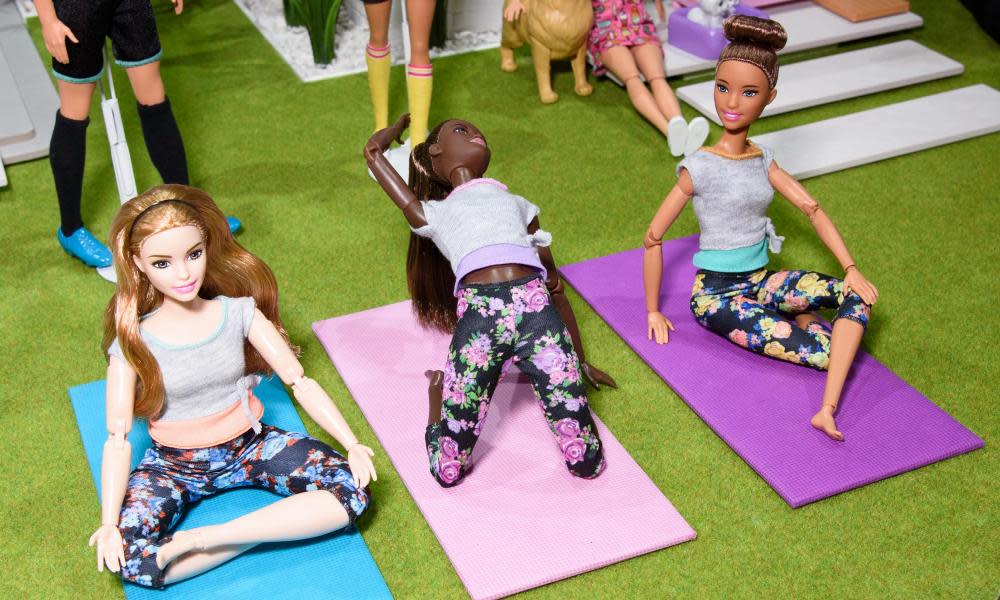Barbie, a kitsch throwback? At least she wears it on her sleeve

There is a lot of excitement over the release, later this year, of the sequel to Frozen, but in my house, greater anticipation is reserved for the Barbie live action movie, due out in 2020, with Margot Robbie in the title role. For the last few years Mattel, Barbie’s makers, have been fighting competition from more modern Disney heroines, and the movie – in which Barbie is, reportedly, expelled from Barbie world for not being perfect enough – is part of the brand’s attempt at a feminist rejigging.
I was never big into Barbie as a child. She and Ken seemed underpowered compared with my gang of hulking great Sindy dolls and their single beau, Action Man, with his weird felt hair and khaki jeep and switch at the back of his head that actually made his eyes swivel. Sindy has no presence in America, however, and among my daughters’ fourth birthday presents were palaeontologist Barbie and scientist Barbie. They are also committed to a seven-season Barbie animation on Netflix called Life in the Dreamhouse.
It is curious to watch a brand associated to the level of archetype with its reductive representation of women try to resell itself as progressive – although Barbie has always had a certain amount of feminist window-dressing. In the 1960s, apparently, there was an astronaut Barbie and a surgeon Barbie, although of course they both looked identical to fashion-horse Barbie. Now, after years of Barbie’s proportions being mocked and criticised, there is the option of a “curvy Barbie”, introduced in 2016 along with tall and petite Barbie, and with a fuller figure than the norm. (As my kids recently discovered, skinny Barbie’s clothes don’t fit over curvy Barbie’s bum). Some Barbies have glasses. Last week, Mattel introduced a Barbie in a wheelchair.
The tone of Life in the Dreamhouse, meanwhile, is arch, a sort of italicised horror-show in which Ken is a lovable idiot, Barbie is generous and kind and her rival, Rockelle, is a conniving mean girl, forever getting her comeuppance by falling into fountains or having vats of cake frosting spill on her dress. The show winks at the adults watching – don’t worry, we know the very idea of Barbie is ridiculous! – while selling to the kids a world in which girls scream and kvetch and throw wardrobe-related fits and demand that everything in their life come in pink. It is Girl World to the extent that the Barbie mansion is entirely self-governing, but all they do with their power is fight over who is the cutest.
Oddly, however, I find the kitsch style of Life in the Dreamhouse, and the Barbie range more generally, preferable to the strained sincerity of Frozen with its tedious life lessons. Elsa and her fellow Disney princesses come with you-go-girl messaging as standard, but the vehicle for this message is, as it always was, a figurine with a tiny waist, plunging cleavage and huge eyes, which in doll form looks unavoidably porny. Modern Barbie is over-ironised, perhaps, but after almost 60 years in production, she has the one thing her rivals still lack; a degree of self-awareness that amounts almost to charm.
• Emma Brockes is a Guardian columnist

 Yahoo News
Yahoo News 
